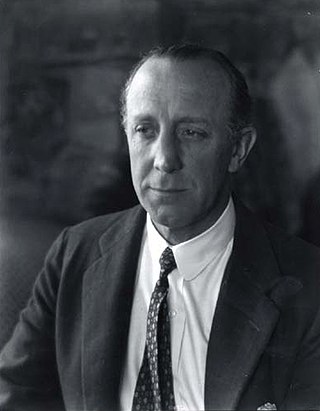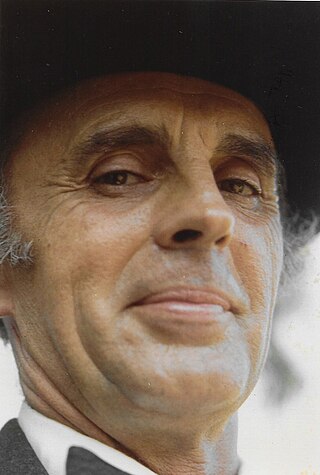Related Research Articles
Paul Jenkins was an American abstract expressionist painter.

Morris Cole Graves was an American painter. He was one of the earliest Modern artists from the Pacific Northwest to achieve national and international acclaim. His style, referred to by some reviewers as Mysticism, used the muted tones of the Northwest environment, Asian aesthetics and philosophy, and a personal iconography of birds, flowers, chalices, and other images to explore the nature of consciousness.

Masami Teraoka is an American contemporary artist. His work includes Ukiyo-e-influenced woodcut prints and paintings in watercolor and oil. He is known for work that merges traditional Edo-style aesthetics with icons of American culture.
Dong Kingman was a Chinese American artist and one of America's leading watercolor masters. As a painter on the forefront of the California Style School of painting, he was known for his urban and landscape paintings, as well as his graphic design work in the Hollywood film industry. He has won widespread critical acclaim and his works are included in over 50 public and private collections worldwide, including the Metropolitan Museum of Art; Museum of Fine Arts, Boston; Brooklyn Museum; deYoung Museum; Art Institute of Chicago; and the National Gallery of Art in Washington, DC.
Harry Shoulberg was an American expressionist painter. He was known to be among the early group of WPA artists working in the screen print (serigraph) medium, as well as oil.

Kenneth Price was an American artist who predominantly created ceramic sculpture. He studied at the Chouinard Art Institute and Otis Art Institute in Los Angeles, before receiving his BFA degree from the University of Southern California in 1956. He continued his studies at Chouinard Art Institute in 1957 and received an MFA degree from New York State College of Ceramics at Alfred University in 1959. Kenneth Price studied ceramics with Peter Voulkos at Otis and was awarded a Tamarind Fellowship.

Paul Feeley was an artist and director of the Art Department at Bennington College during the 1950s and early 1960s.
Ed Moses was an American artist based in Los Angeles and a central figure of postwar West Coast art.
John Button was an American artist, well known for his city-scapes. Educated at the University of California, Berkeley then moved to New York City in the early 1950s. He became friends with Fairfield Porter and Frank O'Hara and assumed his part in the New York School of Painters and Poets.

Francis de Erdely was a Hungarian-American artist who was renowned in Europe and the United States for his powerful figure paintings and drawings as well as for his teaching abilities.

Robert Gwathmey was an American social realist painter. His wife was photographer Rosalie Gwathmey and his son was architect Charles Gwathmey.

Paul Hampden Dougherty was an American marine painter. Dougherty was recognized for his American Impressionism paintings of the coasts of Maine and Cornwall in the years after the turn of the 20th century. His work has been described as bold and masculine, and he was best known for his many paintings of breakers crashing against rocky coasts and mountain landscapes. Dougherty also painted still lifes, created prints and sculpted.
Roland Conrad Petersen is a Danish-born American painter, printmaker, and professor. His career spans over 50 years, primarily in the San Francisco Bay Area and is perhaps best-known for his "Picnic series" beginning in 1959 to today. He is part of the Bay Area Figurative Movement.

Ezio Martinelli was an American artist who belonged to the New York School Abstract Expressionist artists, a leading art movement of the post-World War II era.

Byron Randall was an expressionist artist and social activist. Recognized as both a painter and a printmaker, he produced landscapes, still lifes, portraiture, satire, and nudes. Labor, war, and Mexico are among his most prominent themes. Critics identify glowing and unusual color, dramatic lines, intense energy, and emotional range as the hallmarks of his style. As an activist, Randall was known for peace and environmental work, founding and chairing arts organizations, and promoting international cultural understanding.

Ronald Bladen was a Canadian-born American painter and sculptor. He is particularly known for his large-scale sculptures. His artistic stance, was influenced by European Constructivism, American Hard-Edge Painting, and sculptors such as Isamu Noguchi and David Smith. Bladen in turn had stimulating effect on a circle of younger artists including Carl Andre, Donald Judd, Sol LeWitt and others, who repeatedly referred to him as one of the 'father figures' of Minimal Art.
Tom Holland is an American visual artist. Holland is known for creating a style of art that may use fiberglass, aluminum, epoxy paint, plywood, beads, oil paint, palette knives, marble, copper, paper, and clay. For clay he uses watercolor, acrylic urethane, and ceramic glazes.
Robert Boardman Howard (1896–1983), was a prominent American artist active in Northern California in the first half of the twentieth century. He is also known as Robert Howard, Robert B. Howard and Bob Howard. Howard was celebrated for his graphic art, watercolors, oils, and murals, as well as his Art Deco bas-reliefs and his Modernist sculptures and mobiles.

Walter Elmer Schofield was an American Impressionist landscape and marine painter. Although he never lived in New Hope or Bucks County, Schofield is regarded as one of the Pennsylvania Impressionists.

Byron August Wilson (1918–1992) was an American mid-20th century artist and educator, known for his jewelry design.
References
- 1 2 3 4 5 6 7 Cooper, Elizabeth (1902-11-24). "Walter Quirt (1902-1968)". American Social Surrealist and Abstractionist. Retrieved 2016-05-17.
- 1 2 "Walter Quirt Biography – Walter Quirt on artnet". Fine Art, Decorative Art, and Design - The Art World Online. 1960-03-02. Retrieved 2016-05-17.
- ↑ Worssam, Nancy (2015-05-01). "Walter Quirt: One of the most vibrant artists you've never heard of". The Seattle Times. Retrieved 2016-05-17.
- ↑ "Walter Quirt". Frederick Holmes and Company - Gallery of Modern & Contemporary Art. Retrieved 13 June 2019.